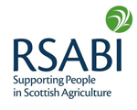RED CLOVER
(Trifolium Pratense)
In contrast to white clover, red clover has an upright growth habit and a strong deep taproot from which finer roots arise. The crown located at the base of the stem acts as a store of nutrients.

USES OF RED CLOVER
Its main role is for silage production, but it is a useful component in grazing mixtures with its drought tolerance, particularly if it is managed on a rotational basis. Care has to be taken to not graze the aftermath below 4cm.
YIELDS of 12-14 tonnes DM/ha when grown with ryegrass and can fix 150-250kg N/ha per year. As with white clover, it takes about 12 months from establishment for these levels of nitrogen to be available. Red clover content and herbage production were greater on swards when zero N was applied compared to 50kg N/ha.
SOIL FERTILITY BUILDER
Improves soil structure and supplies organic matter. Relatively drought tolerant due to deep taproot.
PROTEIN
High protein content of 16-20%. Feeding values of red clover silage higher than straight grass silage, greater DM intakes and higher animal performance.
Performs best on well drained and fertile soils.
CHALLENGES
Lifespan typically 2-4 years at farm level but recent research at Teagasc Grange has shown that with very good initial establishment and optimum levels of soil fertility, it can persist for up to 6 years. Critical to this longevity is good management with protecting the crown from overgrazing and cutting too low vital to its persistency.
PERSISTENCY
To maximise persistency, do not cut or graze more frequently than every 30 days. Cut silage crops at 7/8cm stubble height and an optimum grazing residual height of 6cm.
Avoid heavy machinery and traffic in wet conditions (tyre combinations and controlled traffic).
3-4 silage cuts can be taken and approximately 80-90% of total annual yield will be obtained from cuts completed by mid-August. The final cut should be taken no later than mid-October.
Red clover can contain up to 1% oestrogenic compounds which can lower ewe fertility, but store lambs thrive on red clover swards.
BLOAT
Avoid cold wet weather and do not introduce animals when they are particularly hungry. It should be introduced slowly especially in adverse conditions with roughage being fed alongside it.
ROTATION
The main pest of red clover is stem eelworm (causes distortion of growing buds & young leaves – death of the plant) and disease challenge is from sclerotinia. Keep a 5 year break between red clover crops to avoid a build up of eelworm. Not the same strains for white and red clover so white can be sown to break the pest cycle.




